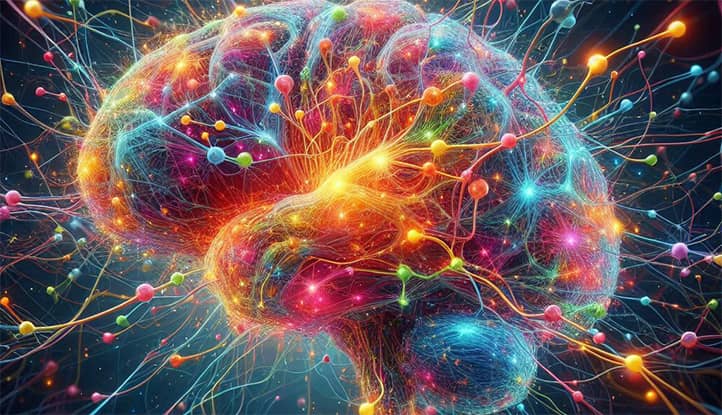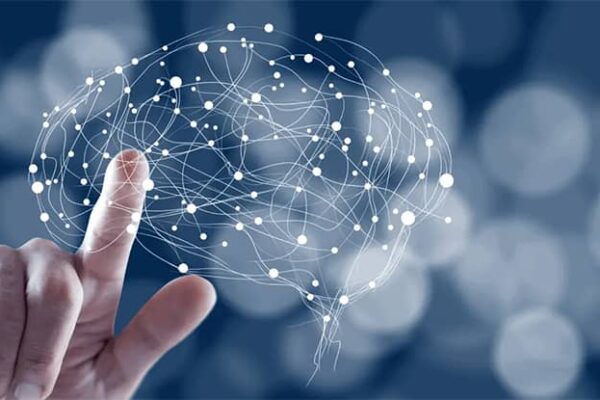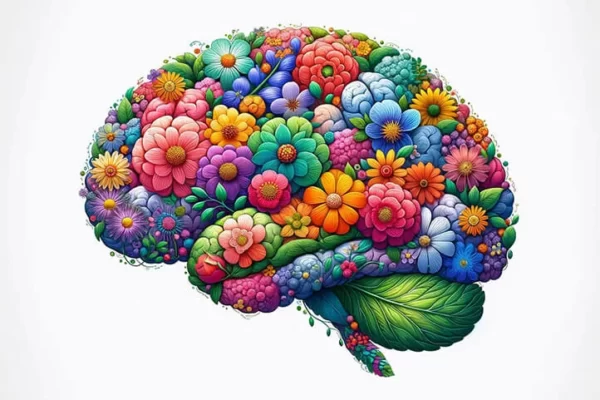Higher mental functions (HMF) are complex mental processes that play a key role in human cognitive activity. They differ from elementary mental processes by their complexity, intentionality, and mediation. Understanding higher mental functions is of great importance to psychology, pedagogy, neuroscience, and other fields related to the study of the human brain and behavior.
In contemporary psychology and neuroscience, higher mental functions are regarded as key components of human cognition, defining the uniqueness of human intelligence and the ability to adapt to complex social and cultural environments. Studying HMF not only helps to understand the mechanisms of the human brain but also allows for the development of effective methods for learning, correcting developmental disorders, and rehabilitating neurological and mental illnesses.
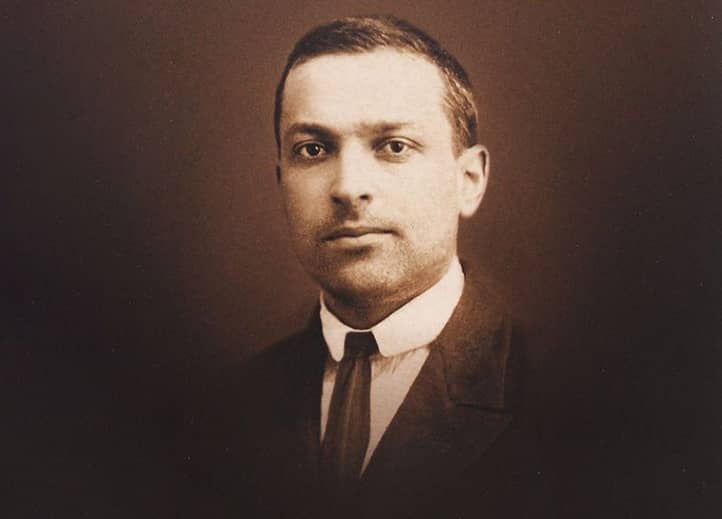
The Historical Development of the Concept of Higher Mental Functions
The journey to understanding higher mental functions has been long and winding, reflecting the evolution of scientific thought in psychology and related disciplines. From early philosophical reflections on the nature of the human mind to modern neurocognitive research, the concept of HMF has undergone many transformations and reinterpretations.
Each stage in the development of this concept has been closely tied to the socio-cultural context of its time, reflecting not only scientific advancements but also societal views on the nature of human consciousness and cognition. This interaction between science and culture has largely shaped the unique character of the theory of higher mental functions.
The interdisciplinary nature of HMF research, which brings together psychology, physiology, linguistics, and other sciences, has become a key factor in forming a comprehensive understanding of the complex nature of human cognition. This fusion of various scientific approaches has allowed for a multifaceted and dynamic view of human mental functioning.
Contribution of L.S. Vygotsky
The concept of higher mental functions was first proposed by the prominent Soviet psychologist Lev Semyonovich Vygotsky in the 1920s. He asserted that higher mental functions are not innate but are formed through social interaction and the cultural development of the child.
Vygotsky identified the following key characteristics of higher mental functions:
- Social origin.
- Mediation.
- Voluntariness.
- Systematicity.
These ideas formed the basis of the cultural-historical theory of psychological development, which had a significant impact on the development of psychology and pedagogy in the 20th century.
Vygotsky emphasized that higher mental functions are formed through the internalization of external actions and social relationships. He introduced the concept of “psychological tools”—signs, symbols, and other cultural means—that mediate mental processes and allow individuals to regulate their behavior and thinking.
For example, using counting sticks or fingers when learning to count illustrates how external tools become instruments of thinking, gradually internalized and transformed into internal mental processes.
Further Development by A.R. Luria
Alexander Romanovich Luria, Vygotsky’s student and follower, made a significant contribution to the theory of higher mental functions. He developed the theory of systemic-dynamic localization of higher mental functions in the brain, which formed the foundation of modern neuropsychology.
Luria demonstrated that higher mental functions are not localized in specific brain areas but represent complex functional systems in which various brain structures participate. This idea was revolutionary in understanding the brain’s work and its connection to mental processes.
Luria identified three main functional blocks in the brain:
- The block regulating tone and wakefulness (stem and subcortical structures).
- The block for receiving, processing, and storing information (posterior parts of the cortex).
- The block for programming, regulation, and control of mental activity (frontal lobes of the cortex).
This concept helped explain the complex organization of higher mental functions and their disorders due to local brain lesions. For example, damage to the frontal lobes may result in disruptions in planning and control, affecting all higher mental functions.

Main Characteristics of Higher Mental Functions
Higher mental functions represent a unique phenomenon distinguishing human cognition from animal mental processes. These functions not only quantitatively surpass elementary mental reactions but qualitatively differ from them, forming a new level of mental organization.
The complexity and multilevel structure of higher mental functions reflect the evolutionary path of human mind development, encompassing both biological and cultural-historical factors. This duality of HMF nature creates a unique plasticity in human mentality, allowing adaptation to diverse conditions and tasks.
The dynamic nature of higher mental functions is evident in their capacity for constant development and transformation throughout a person’s life. This feature opens up extensive opportunities for learning and personal growth, as well as for compensating for various impairments and deficits.
Social Origin
One of the key characteristics of higher mental functions is their social origin. Unlike elementary mental functions, which have a biological basis, higher mental functions develop through social interaction and the assimilation of cultural experience.
Vygotsky stated that any higher mental function in a child’s development appears twice: first as a form of collective behavior (an interpsychological function) and then as an intrapsychological function (an individual behavior mechanism).
A typical example of this process is the development of speech:
- Initially, the child uses speech as a means of communication with others (interpsychological function), and later, speech becomes a means of thinking and self-regulation (intrapsychological function).
Mediation
Higher mental functions are characterized by mediation, that is, the use of various symbolic systems and cultural tools to regulate mental activity. These may include language, numbers, diagrams, maps, and other symbolic systems.
Mediation allows a person to go beyond immediate perception and action, plan their activities, and control their behavior and thinking.
Examples of HMF mediation:
- Using notes to remember information.
- Applying mathematical formulas to solve problems.
- Using maps and diagrams to navigate space.
Voluntariness
Another significant characteristic of higher mental functions is their voluntariness. This means that a person can consciously manage their mental processes, direct them, and control them.
The development of voluntariness in higher mental functions occurs gradually in ontogenesis and is linked to the formation of self-awareness and will.
Examples of HMF voluntariness:
- The ability to concentrate on a complex task.
- The skill of controlling emotions in stressful situations.
- The capability of intentional memorization.
Systematicity
Higher mental functions represent complex functional systems involving various brain structures and mental processes. They are not isolated abilities but work in close interrelation with each other.
The systematicity of higher mental functions ensures the flexibility and adaptability of human mental activity, allowing effective solutions to complex cognitive tasks.
An example of HMF systematicity is reading, which includes visual perception of symbols, their recognition, association with linguistic meanings, comprehension of the read text, and integration of new information with prior knowledge.

Types of Higher Mental Functions
The variety of higher mental functions reflects the richness and complexity of human experience, encompassing all aspects of human interaction with the world and oneself. Each function represents a unique system with its structure and developmental patterns.
The interconnection and interdependence of different higher mental functions create a complex dynamic system, ensuring the unity and integration of human consciousness and behavior. This system is characterized by high plasticity and adaptability, enabling effective problem-solving in various cognitive and practical tasks.
The cultural determination of higher mental functions is manifested in their close association with language, symbolic systems, and social practices of a particular society. This makes the study of HMF not only a psychological but also an anthropological task, requiring consideration of the cultural context of their formation and functioning.
Memory
Memory, as a higher mental function, is characterized by voluntariness and the use of various mnemonic techniques. Unlike elementary animal memory, human memory relies on complex encoding and storage systems.
Memory types include:
- Short-term memory
- Long-term memory
- Episodic memory
- Semantic memory
- Procedural memory
The development of memory as a higher mental function is associated with mastering cultural tools for memorizing and reproducing information.
Examples of using memory as a higher mental function:
- Using mnemonic techniques to remember large amounts of information.
- Utilizing associations to link new information with known knowledge.
- Strategically planning the process of memorizing and reproducing information.
Attention
Voluntary attention is an important higher mental function, allowing a person to focus consciously on specific aspects of the environment or internal experiences.
Characteristics of attention as a higher mental function:
- Stability
- Concentration
- Distribution
- Switching
The development of voluntary attention is closely related to self-regulation and willpower development.
Examples of attention as an HMF:
- The ability to concentrate for extended periods on a complex task.
- Efficiently distributing attention among several tasks.
- Deliberately ignoring distractions while performing important work.
Thinking
Thinking as a higher mental function is a cognitive activity process characterized by generalized and mediated reflection of reality.
Types of thinking include:
- Visual-action thinking
- Visual-image thinking
- Verbal-logical thinking
- Theoretical thinking
- Practical thinking
The development of thinking is related to mastering cultural knowledge tools, such as concepts, logical operations, and scientific methods.
Examples of thinking as a higher mental function:
- Solving abstract mathematical problems.
- Analyzing complex social situations and predicting their outcomes.
- Developing scientific theories and hypotheses.
Speech
Speech is one of the most important higher mental functions, playing a key role in developing and functioning other mental processes.
Speech functions include:
- Communicative
- Regulatory
- Generalizing
- Cognitive
The development of speech as a higher mental function occurs through social interaction and the assimilation of cultural language norms and usage rules.
Examples of using speech as an HMF:
- Formulating complex abstract ideas.
- Using inner speech for planning and self-control.
- Employing metaphors and analogies to explain complex concepts.
Perception
Perception, as a higher mental function, is characterized by meaningfulness, categorization, and selectivity. Unlike elementary perception, it relies on a person’s past experience and knowledge.
Features of Perception as a Higher Mental Function:
- Constancy
- Objectivity
- Wholeness
- Structure
The development of perception is linked to the formation of perceptual standards and the mastery of culturally organized perceptual activities.
Examples of Perception as a Higher Mental Function:
- Ability to “read between the lines” in a text, understanding hidden meanings.
- Skill in analyzing complex visual compositions in art.
- Recognition of others’ emotional states through subtle nonverbal cues.
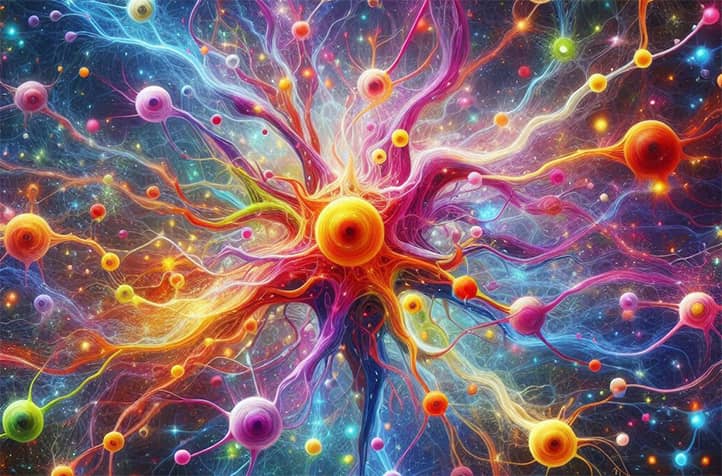
Formation and Development of Higher Mental Functions
The process of establishing higher mental functions is a unique phenomenon where biological development closely intertwines with social learning and cultural assimilation. This process is neither linear nor predetermined, but rather characterized by a complex dynamic interaction of various factors and mechanisms.
Critical periods in the development of higher mental functions play a key role in the formation of cognitive structures and abilities. These periods represent windows of increased plasticity, during which the impact of the environment and learning can have particularly strong and long-term effects on emerging mental functions.
Individual differences in the development of higher mental functions reflect the uniqueness of each person’s life path. These differences result from the complex interaction of genetic factors, environmental characteristics, and personal experiences, creating a unique pattern of strengths and weaknesses in an individual’s cognitive profile.
The Role of Social Interaction
According to Vygotsky’s theory, higher mental functions are formed through social interaction. A child first masters cultural forms of behavior and thinking through interactions with adults and peers, and later internalizes them, turning them into internal mental processes.
Key Elements in This Process:
- Joint activities
- Communication
- Learning
- Play
Social interaction provides the foundation for developing higher mental functions, equipping the child with essential cultural tools and ways of engaging.
Examples of Social Interaction’s Role in Developing Higher Mental Functions:
- Mastering speech through communication with parents and peers.
- Formation of voluntary attention by following adults’ instructions.
- Development of logical thinking through problem-solving under teacher guidance.
Stages of Formation
The formation of higher mental functions progresses through several stages:
- External activity with objects
- External speech
- Inner speech
- Action internalization
At each stage, external activities gradually transform into internal mental functions. This process includes action folding, automation, and internalization.
Example of the Stages of Higher Mental Function Formation in Counting:
- The child counts by moving real objects.
- Counts out loud while pointing to objects.
- Counts in a whisper or internally while looking at objects.
- Counts mentally, without relying on external objects.
This example shows how external action gradually transforms into an internal mental function.
Zone of Proximal Development
Vygotsky’s concept of the zone of proximal development is essential for understanding the process of higher mental functions formation. The zone of proximal development is the gap between the child’s actual level of development and the potential level they can achieve with adult guidance or in collaboration with more capable peers.
Working within the Zone of Proximal Development Allows:
- Stimulating the development of higher mental functions.
- Optimizing the learning process.
- Individualizing the pedagogical approach.
Example of Applying the Zone of Proximal Development Concept:
- A child can independently solve simple arithmetic problems (actual development level) but can learn more complex mathematical operations with a teacher’s help (zone of proximal development).
Effective teaching should focus on the zone of proximal development, offering tasks the child can solve with minimal assistance, gradually increasing the level of difficulty.
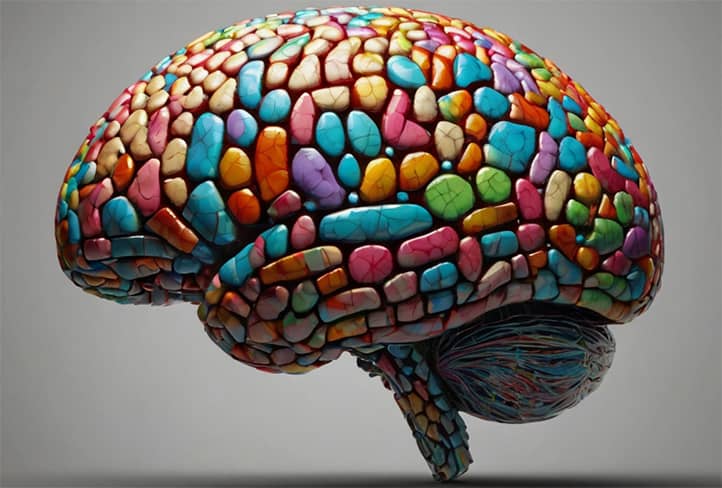
Neurophysiological Basis of Higher Mental Functions
Studying the neurophysiological basis of higher mental functions reveals an intricate picture of the human brain’s complexity and elegance. Each higher mental function depends on a complex network of neural connections spanning various brain regions and organizational levels.
The dynamic nature of brain organization for higher mental functions is evident in the constant reorganization of neural networks in response to new experiences and learning. This neuroplasticity underpins a person’s ability to adapt to changing conditions and acquire new skills throughout life.
The interaction of various brain functional systems in supporting higher mental functions creates a unique “neural symphony,” where each area contributes specifically to the overall outcome. This interaction is highly flexible, with compensation capabilities if individual system components are damaged.
Brain Functional Systems
According to A.R. Luria’s theory, higher mental functions are realized through complex brain functional systems. These systems include different brain structures, each contributing specifically to the realization of mental functions.
Luria identified three main brain functional blocks:
- Block for arousal and wakefulness regulation
- Block for information reception, processing, and storage
- Block for programming, regulation, and control of mental activity
Each block plays a role in implementing higher mental functions, providing their energetic, informational, and regulatory basis.
Example of Functional Block Interaction:
- When solving a complex math problem, the first block provides the necessary brain activation level, the second block is responsible for perceiving the problem’s conditions and retrieving relevant information from memory, and the third block organizes the problem-solving process, controls accuracy, and corrects errors.
Plasticity of the Nervous System
Nervous system plasticity is crucial for the formation and functioning of higher mental functions. It enables the brain’s adaptability to new conditions and tasks, as well as compensates for damage to brain structures.
Types of Neuroplasticity:
- Synaptic plasticity
- Structural plasticity
- Functional plasticity
Understanding neuroplasticity mechanisms is essential for developing methods to correct higher mental function disorders and optimize learning processes.
Example of Neuroplasticity:
- When learning a new language, the brain forms new neural connections responsible for perception and production of speech in that language. Over time, these connections strengthen, leading to the automation of language skills.

Disorders of Higher Mental Functions
Studying higher mental function disorders offers unique insights into the mechanisms underlying their operation and interrelations. Each disorder, whether it is acoustic-mnestic aphasia, agnosia, or amnesia, reveals specific aspects of cognitive processes’ organization and functioning, which may be undetectable under normal functioning.
The variability in disorder manifestations reflects the complexity and plasticity of the human brain. Even with similar brain structure damages, the clinical picture can vary significantly among patients, indicating individual differences in mental function organization and compensatory mechanisms.
Research on higher mental function disorders has practical significance, enabling the development of more effective diagnostic and rehabilitation methods, as well as opening new perspectives on understanding normal mental and brain functioning.
Types of Higher Mental Function Disorders
Higher mental function disorders can arise from various causes, including brain injuries, strokes, neurodegenerative diseases, and other pathological processes.
Main Types of Higher Mental Function Disorders:
- Aphasia (speech disorders)
- Agnosia (perception disorders)
- Apraxia (voluntary movement disorders)
- Amnesia (memory disorders)
- Attention and executive function disorders
Each disorder has specific manifestations and mechanisms linked to damage to certain brain structures and dysfunction of functional systems.
Example of a Higher Mental Function Disorder:
- In semantic aphasia (a disorder in understanding logical-grammatical structures), a patient may struggle to understand phrases like “father’s brother” or “square under the circle,” despite understanding individual words. This is associated with dysfunction in the left hemisphere’s parieto-temporo-occipital area, which integrates spatial and linguistic relations.
Methods of Diagnosis and Correction
The diagnosis of higher mental function disorders relies on a comprehensive neuropsychological examination, which includes various tests and tasks to assess the condition of different mental processes.
Diagnostic Methods:
- Neuropsychological tests
- Neuroimaging (MRI, fMRI, PET)
- Electrophysiological methods (EEG, EP)
Correction of higher mental function disorders is based on principles of neuroplasticity and includes:
- Cognitive rehabilitation
- Speech therapy
- Occupational therapy
- Psychotherapy
- Medication treatment
Effectiveness of correction depends on the timeliness and comprehensiveness of interventions.
Example of Diagnosis and Correction:
- When memory impairment is suspected, the patient may be given tests to remember a word list or visual images. If an amnestic syndrome is diagnosed, a cognitive rehabilitation program may be developed, including memory training exercises, mnemonics, and external memory aids (notebooks, planners).

The Significance of the Theory of Higher Mental Functions
The theory of higher mental functions is a powerful conceptual tool that allows integrating data from various scientific disciplines into a unified picture of human cognition. It bridges the biological and social approaches to studying the psyche, overcoming the traditional dualism in understanding human nature.
The influence of the theory of HMF extends far beyond academic psychology, penetrating various fields of practical activity. From education and healthcare to artificial intelligence development, ideas about the systemic and culturally determined nature of mental processes find broad application and reinterpretation.
The philosophical significance of the theory of higher mental functions lies in its contribution to understanding the essence of human consciousness and its relationship to the brain and culture. This theory offers a unique perspective on the problem of consciousness, emphasizing its social nature while not denying its material foundation.
In Psychology and Education
The theory of higher mental functions has had a significant impact on the development of psychology and education. It provided a new perspective on the nature and development of mental processes, leading to the rethinking of many aspects of psychological theory and practice.
Significance of the Theory of HMF in Psychology and Education:
- Understanding the mechanisms of mental development.
- Development of new teaching and upbringing methods.
- Creation of developmental programs.
- Formation of an individualized approach in education.
- Development of methods for corrective pedagogy.
The theory of higher mental functions laid the foundation for the cultural-historical approach in psychology, which emphasizes the role of social and cultural context in the development of the psyche. This led to a reevaluation of the role of education and upbringing in shaping personality.
Example of Applying the Theory of HMF in Education:
- Developmental learning based on Vygotsky’s ideas aims to foster students’ ability to think independently and solve problems. Rather than merely transmitting knowledge, such learning focuses on the development of higher mental functions through organizing joint activities between teacher and students, using problem situations, and encouraging reflection.
In Neuropsychology and Rehabilitation
The theory of higher mental functions became the foundation for the development of neuropsychology as an independent scientific discipline. Vygotsky’s and Luria’s ideas on the systemic structure of higher mental functions and their cerebral organization provided a new approach to understanding the relationship between the brain and the psyche.
Significance of the Theory of HMF in Neuropsychology and Rehabilitation:
- Development of neuropsychological diagnostic methods.
- Creation of cognitive rehabilitation programs.
- Understanding the mechanisms of compensation in brain injuries.
- Development of neurocognitive training strategies.
Applying the theory of higher mental functions in rehabilitation has significantly improved the effectiveness of restoring impaired functions in patients with various neurological disorders.
Example of Applying the Theory of HMF in Rehabilitation:
- In restoring speech after a stroke, methods are used based on an understanding of the systemic organization of speech function. For instance, in motor aphasia (impairment of voluntary speech), the work may involve not only articulation training but also restoring inner speech, sentence schematics, and the use of gestures and writing as auxiliary tools.
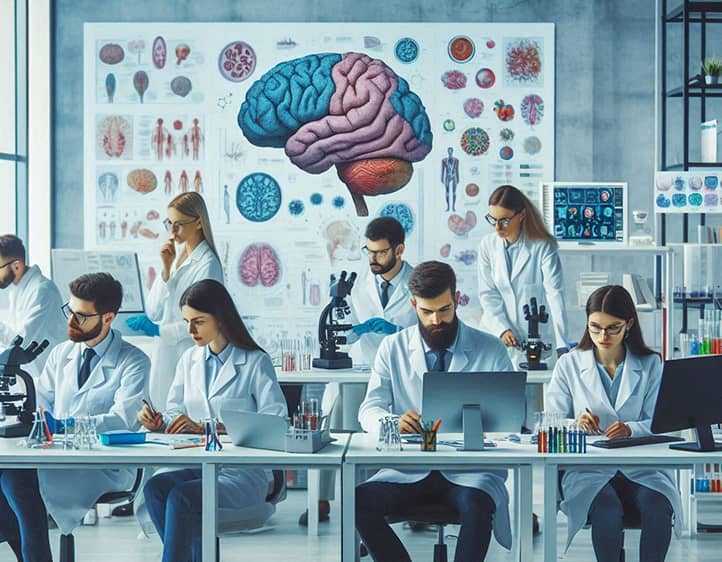
Modern Research and Perspectives
The development of new brain research technologies opens unprecedented opportunities for studying higher mental functions at the neural level. Methods such as optogenetics, chemogenetics, and high-resolution neuroimaging allow for observing and modulating neural network activity in real-time, providing new insights into the mechanisms of HMF.
Integrating HMF research with advances in genetics and epigenetics creates a new understanding of the interaction between genetic factors and environmental influences in shaping cognitive abilities. This opens prospects for developing personalized approaches to learning and correcting developmental disorders.
Understanding higher mental functions in the context of evolutionary neurobiology offers a fresh perspective on the origins and development of human cognition. Comparative studies of cognitive abilities in humans and animals reveal both the uniqueness of the human mind and its deep evolutionary roots.
Neuroimaging Research
Modern neuroimaging methods, such as functional magnetic resonance imaging (fMRI) and positron emission tomography (PET), allow studying the brain mechanisms of higher mental functions at a new level.
Main Directions of Neuroimaging Research of HMF:
- Studying neural networks that support various cognitive processes.
- Researching brain plasticity during learning and rehabilitation.
- Analyzing changes in brain activity in various mental disorders.
These studies confirm and refine many aspects of the classical theory of higher mental functions, providing new data on their cerebral organization.
Example of Neuroimaging Research on HMF:
- Research using fMRI has revealed a network of brain regions activated during working memory tasks. This network includes the prefrontal cortex, parietal cortex, and other structures, whose interaction ensures the retention and manipulation of information in the short term.
Cognitive Neuroscience
The development of cognitive neuroscience has led to the integration of psychological theories of higher mental functions with data on the neural mechanisms of cognitive processes.
Key Research Directions:
- Studying the neural basis of consciousness and self-awareness.
- Researching the mechanisms of cognitive control and executive functions.
- Analyzing neural correlates of various types of memory and learning.
These studies allow for creating more detailed and accurate models of the functioning of higher mental functions, considering both psychological and neurobiological aspects.
Example of Research in Cognitive Neuroscience:
- Studies on cognitive control mechanisms have shown the important role of the prefrontal cortex in processes of planning, decision-making, and suppressing irrelevant responses. This has led to a better understanding of the neurobiological basis of the voluntary nature of higher mental functions and has inspired new approaches to correcting self-regulation disorders.
Computer Modeling
The development of information technologies and artificial intelligence has opened new opportunities for studying and modeling higher mental functions.
Directions of Computer Modeling of HMF:
- Creating neural network models of cognitive processes.
- Developing machine learning algorithms that simulate human thinking.
- Modeling the processes of development and formation of higher mental functions.
These studies not only help in better understanding the mechanisms of human brain function but also contribute to the development of new technologies in artificial intelligence and cognitive robotics.
Example of Computer Modeling of HMF:
- The development of neural network models for speech recognition, based on the principles of the human auditory cortex, has enabled more efficient automatic translation and voice control systems. These models also help to understand better the mechanisms of speech perception and processing in the human brain.
Future Directions of the Theory of Higher Mental Functions
The prospects for further development of the theory of higher mental functions are associated with the integration of various scientific approaches and research methods.
Main Directions for Development:
- Creating comprehensive models of higher mental functions that integrate data from psychology, neuroscience, and computer science.
- Developing new methods for diagnosing and correcting HMF impairments using modern technologies.
- Studying the impact of digital technologies on the development and functioning of higher mental functions.
- Researching the role of genetic factors in the formation and development of HMF.
These research directions are of not only theoretical importance but also have significant practical applications in education, medicine, and technology.
Example of a Promising Research Direction:
- Studying the impact of digital technologies on the development of higher mental functions in children and adolescents. This includes research on the influence of smartphones, social networks, and video games on the development of attention, memory, thinking, and social skills. The results of such research could help develop recommendations for the optimal use of digital technologies in education and daily life.

Practical Application of the Theory of Higher Mental Functions
The application of the theory of higher mental functions (HMF) in the development of educational technologies leads to the creation of innovative teaching methods that take into account the natural mechanisms of cognitive function formation and development. This optimizes the learning process, making it more effective and tailored to the individual characteristics of students.
In psychotherapy and psychological counseling, understanding the mechanisms of HMF helps create more effective methods for addressing various psychological issues. From cognitive-behavioral therapy to neuropsychological correction, the ideas about the systemic nature of mental processes find wide application in practical psychology.
Using the theory of higher mental functions in the development of human-computer interfaces and artificial intelligence systems enables the creation of more intuitive and efficient solutions. Considering human perception, attention, and thinking features in the design of technical systems contributes to more ergonomic and user-friendly technologies.
In Education
The theory of higher mental functions has found wide application in educational practices, facilitating the development of more effective learning and development methods:
- Development of training programs aimed at forming metacognitive skills.
- Creation of educational technologies that consider the zone of proximal development of students.
- Implementation of teaching methods based on the principle of mediation (use of schemas, models, symbols).
- Development of inclusive educational programs for children with special needs.
Example of Practical Application:
- In primary school, teaching methods for writing are based on the theory of HMF. Instead of mechanically copying letters, children are taught to analyze the structure of the letter, identify its elements, and use auxiliary lines. This fosters a conscious writing skill as a higher mental function.
In Clinical Practice
Understanding the mechanisms of higher mental functions plays a key role in diagnosing and treating various neurological and mental disorders.
Application of HMF Theory in Clinical Practice:
- Development of methods for neuropsychological diagnostics.
- Creation of cognitive rehabilitation programs after a stroke or traumatic brain injury.
- Development of methods for correcting developmental disorders in children.
- Creation of therapeutic approaches for treating mental disorders.
Example of Clinical Application:
- In the rehabilitation of patients with aphasia (speech impairment) after a stroke, methods based on understanding the systemic organization of speech function are used. Therapy may include not only articulation training but also phrase structure restoration, work with semantic connections of words, and the use of gestures and writing as auxiliary tools.
In Technology Development
The theory of higher mental functions finds application in developing new technologies, especially in artificial intelligence and human-machine interaction:
- Development of interfaces that consider human perception and attention features.
- Creation of artificial intelligence systems that model human thinking processes.
- Development of educational technologies that adapt to individual student characteristics.
- Creation of assistive technologies for people with disabilities.
Example of Technological Application:
- Speech recognition systems are developed based on an understanding of the mechanisms of human speech perception. Such systems consider not only the acoustic characteristics of speech but also context, intonation, and non-verbal components, enhancing recognition accuracy and making interaction with technology more natural for humans.
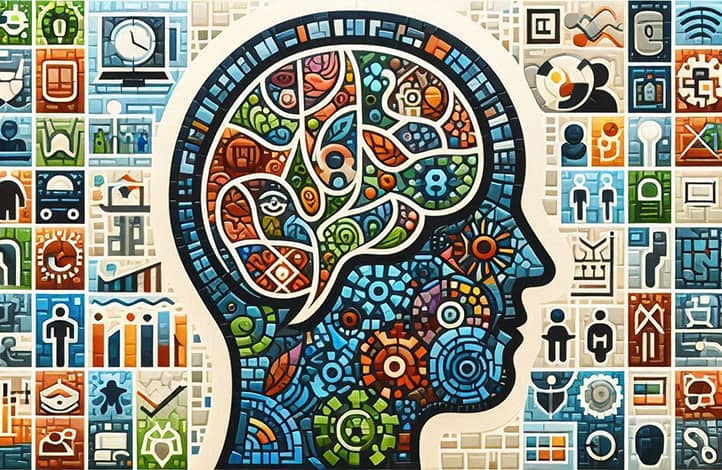
Conclusion
The theory of higher mental functions, developed by L.S. Vygotsky and his followers, remains one of the key concepts in modern psychology and neuroscience. It provides a holistic view of the nature and development of complex mental processes, emphasizing their social origin, mediation by cultural tools, and systemic structure.
Main Tenets of the Theory of Higher Mental Functions:
- Social origin of HMF.
- Mediation of mental processes.
- Systemic structure of HMF.
- Plasticity and potential for development throughout life.
These ideas have found broad application in various fields, from pedagogy and psychotherapy to neurorehabilitation and artificial intelligence development.
Modern research, using the latest neuroimaging and computer modeling methods, continues to develop and refine the theory of higher mental functions. This research provides new data on the brain mechanisms of cognitive processes and opens new perspectives for understanding the workings of the human brain and psyche.
The significance of the theory of higher mental functions extends far beyond academic science. It has important practical applications in education, medicine, psychological assistance, and new technology development. Understanding the mechanisms of higher mental function formation and operation enables the development of more effective learning methods, correction of developmental disorders, and rehabilitation.
In conclusion, the theory of higher mental functions remains one of the foundational concepts in studying the human psyche. It continues to evolve, integrating classic ideas with the latest scientific achievements, and opens new horizons for understanding the complexity and uniqueness of human cognition.
Research in this field is likely to focus on even deeper understanding of the neurobiological foundations of higher mental functions, their development in ontogeny and evolution, as well as on creating new methods for their development and correction. This may lead to revolutionary changes in education, medicine, and technology, opening new opportunities for unlocking human potential and improving the quality of life for people with various cognitive impairments.
